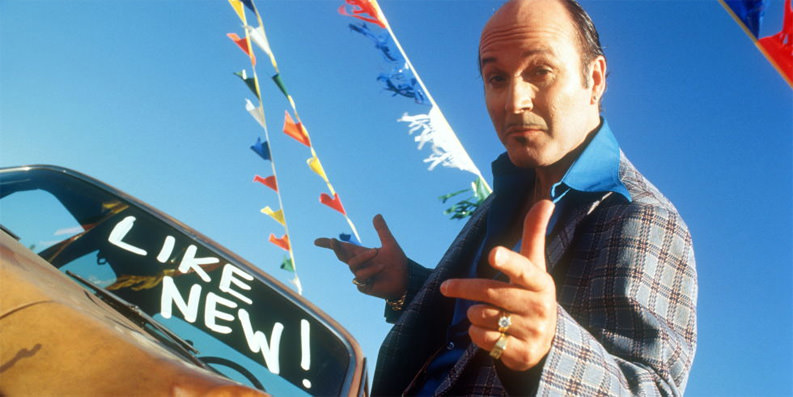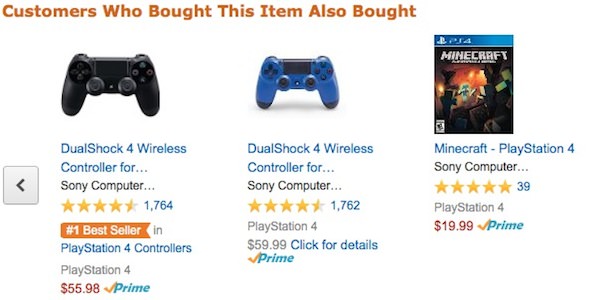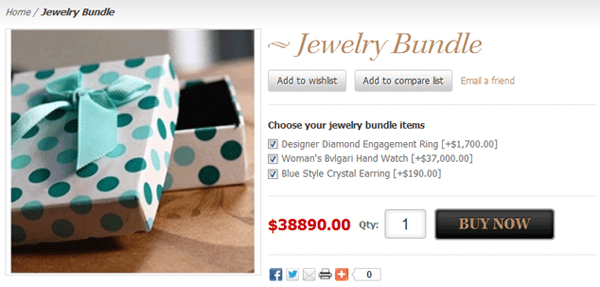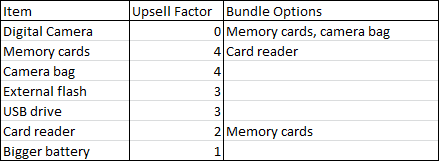-
Is It Possible to Upsell and Make Customers Happy at the Same Time?
Fri, 6 Nov 2015, in Customer Support
 photo credit David Wilson
photo credit David WilsonWhen I think of upselling, I think of someone pressuring me into buying things I don’t need.
That’s because it doesn’t take much to conjure the image of a sleazy car salesman pushing rust protection, floor mats and the like.
Luckily this type of thinking is outdated, and for good reason. An upsell shouldn’t be a hair-pulling experience, but an alignment of business and customer via a series of thoughtful nudges. In other words, there should be a real strategy behind your every action.
This type of thinking should reach into every facet of your operations, including product design, positioning, and bundling.
The golden rule of sales is to do what’s in the best interest of your customer, not the company. Because if you don’t, you’ll never get past selling a commodity instead of a product that customers can assign value to. So how do you upsell – and make customers happy doing it?
Let’s get down to the bottom of it.
What are upsells, cross-sells and bundles?
Think of upselling not as “selling” – but as another opportunity to go an extra mile for your customers. Listen and figure out their problem, even if you know they’ll be buying from you. With their best interest at heart, you’ll often find that upselling happens naturally. But what are the different upselling techniques and which one is right for your business and customers?
Upselling in general involves selling a better, more optioned out and higher priced product in place of what is currently considered by the customer.

Cross-selling involves selling an additional product (or products) to what is already being sold. This item might have been overlooked by the customer.

Bundling includes adding several products that may be needed or considered by the customer. These are combined together and sold as one product, usually at a discount.

Upselling isn’t without its pitfalls, however. Many companies don’t use upselling as a way to build relationships with customers, but to push their product. Similarly, companies make the mistake of offering too many discounts, thereby cheapening their product in the eyes of the customer.
Upselling can cause unnecessary friction for those just looking to buy your product and get on with their lives.At the same time, customers are already expensive to acquire according to Ipsos and if you’re not upselling properly you’re leaving money on the table. Existing, repeat customers already make up the majority of your revenue, so it’s not surprising that they are 20% more receptive to upsells than new prospects.
Marketers advocating to “maximize revenue per customer” fail to realize the risk of a bad upsell to existing customers. While it may seem like an easy way to boost revenue, you risk jeopardizing your customer relationships if your upsell doesn’t offer them right amount of value at the right moment.
Simply put, you risk selling things to people that don’t need them – and after a while, this will only frustrate your customers and hurt your reputation.
How to upsell the right way:
Make up a list of products you’d like to upsell and assign them a value. This should be based upon your product and your experience selling it. From there on, you can pair products together based on your margins and ultimately what your customers want.
 Keep track of this list and adjust as necessary so you can see what is working and what isn’t.
Keep track of this list and adjust as necessary so you can see what is working and what isn’t.
Decide whether to cross-sell, upsell or bundle. Remember to only upsell items that will add value to the customer experience. Consider multiple ways of combining your products based on how customers use them – Amazon does this with such flair it would make anyone’s head spin. Also consider nudges that aren’t related to upselling, but can push customers to make a bigger purchase – examples include personalized service, freebies and aspects of social proof.
Determine how to do it. The most common way to upsell is during the conversion process: at the signup stage, checkout stage, or payment stage. You must strike a balance, too: if you bombard customers with promotional messages at the wrong time, you will just turn them off.
What if you don’t have a coder?
Don’t have a way to revamp your checkout or app to push messages at the right moment? Don’t worry, there are still ways you can implement various upselling tactics:
When you’re supporting customers
Customers don’t know everything there is to know about your product. When they require clarification about a feature or are looking for a solution, an upsell can be used to point them in the right direction. Best of all, it solves a problem that they had in mind when contacting your help desk in the first place.

At Helprace, we use these techniques not only in email conversations but in our self-service portal as well – where they can get maximum exposure.
After reaching customer milestones
It’s been proven that customers are most receptive to upsells when they are in a happy state of mind. Previous purchases, positive service experiences, state of mind all play into the customer’s reception to value-add sales.
During automated communication
While automating your upsell efforts may sound scary, it doesn’t have to be that way. Think of transactional emails you send to the customer such as receipts, invoices and notifications. Since they have over 8x the open rate of regular marketing email, these present pristine opportunities for upsells.
Downsell if necessary
It may seem like strange advice at first. Why should you downsell at all? By listening to your customer you may realize that they have no need for your higher priced option.
If your customer doesn’t go for your upsell offer, talk them into a lower priced option and see what adjustments you can make to the price or subscription if any. For example, we offer 10% off our monthly plans if customers choose to pay annually.
Although it may sound like an uphill battle to downsell something without making it sound like a downgrade, the key is to emphasize the important features your customer is looking for.
Regardless of your methods, remember to be personal, empathetic and understanding. Upselling should not be about manipulation or coercion. If the customer isn’t receptive to what you’re offering, back off.
Tags: customer support




 Keep track of this list and adjust as necessary so you can see what is working and what isn’t.
Keep track of this list and adjust as necessary so you can see what is working and what isn’t.
